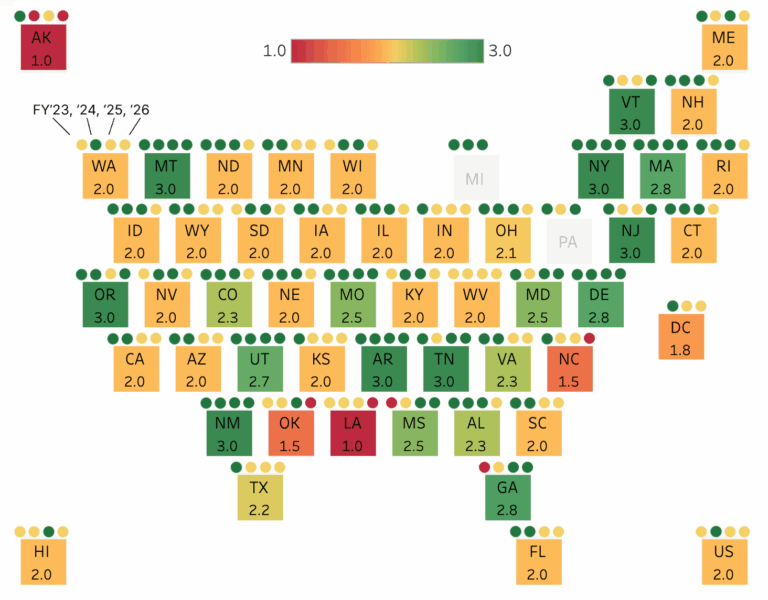The Trump Administration recently released the President’s Fiscal Year 2018 (FY 2018) Budget Blueprint. Before diving into the details, let’s keep two things in mind. First, Congress has yet to finish the FY 2017 budget – that should command our short term attention. Second, there is an adage in Washington about presidential budget proposals: “the President proposes and Congress disposes.” Congress decides what gets cut and what doesn’t, not the President. This document is just what the title says it is: a policy blueprint that presents this administration’s recommendations to Congress.
Regarding FY 2017, the current budget extension (the “continuing resolution” (CR)) runs through April 28. It is likely that Congress will pass a year long CR which funds federal agencies and programs at prior-year levels. (There is talk of getting it done through an omnibus, but I’ve heard that too many times before). Those details are being hashed out now and there are some big items to monitor. For example, a “CR” carries over spending based on authorized activities of the prior year. Last year, K-12 spending was based on the NCLB and not on ESSA, which means that there is no prior-spend for the new $1.6 billion Title IV block grant, and the new $160 million Title II Literacy Education for All, Results for the Nation grant (LEARN). If Congress wants to invest in these, then lawmakers will have to add “anomaly” language to the spending bill. But why would they make make such an effort if these programs are doomed in the next fiscal year, FY 2018? Unless they want to play some cruel joke on schools, they wouldn’t (one hopes). That elevates the importance of the FY 2017 decisions, providing a strong signal of Congressional intent for FY 2018. Let’s now turn to that.
The new FY 2018 Budget Blueprint asks for $54 billion in reductions to non-defense programs in order to cover the proposed boost in defense spending. For the Department of Education, this would mean a 13 percent reduction from the prior year, executed through a four-part strategy.
First, more than 20 categorical programs would be eliminated or cut. Notably, this includes elimination of the Supplemental Educational Opportunity Grant, the 21st Century Community Learning Centers grant, and the ESSA Title II teacher professional development program. The TRIO and GEAR-UP programs would be significantly cut. The Title II grant is a particularly big deal. This is because it both provides more than $2.4 billion to schools, and supports critical activities. Under ESSA, this includes leadership training and services, the strengthening of human capital management systems, and investments in locally-selected, evidence-based, personalized, career development. Title II exists in order to support the lofty goals of continuous school improvement under Title I. Kick out the Title II support, however, and the effectiveness of Title I may crumble. Dr. Sarah Silverman and Elizabeth Combs dig deeper into the matter here. It’s an important read.
Second, the Blueprint protects the core K-12 programs: ESSA Title I would get a $1 billion increase — but with a twist. The funds would come with the “encouragement” to promote programming that allows the funding to follow the student to the public school of his or her choice. It is not clear if the conditions would apply to all of Title I or the additional billion. The reality, however, is that the mechanics of the flow of Title I dollars to schools does not mesh with the stated objectives. Title I funds go to schools with high concentrations of poverty. The supplemental services are for students in the schools that are “at-risk” of not making the state’s academic achievement standards (these could be rich kids in poor schools). The mechanics of this process are in the ESSA statute, so unless Congress changes the statute or interprets this loosely to include weighted per pupil allocation models, it is hard to see how this changes much — which may be the point. IDEA also falls into the stability category. The Blueprint requests about $13 billion, which would be the same as FY 2017.
Third, there would be meaningful but relatively small investments in charter schools and school choice. (W/A Senior Advisor Andy Rotherham has a good take on it here). In addition to the $1 billion in investment for Title I, the Blueprint includes a $168 million increase for the new and significantly expanding charter schools program under ESSA and $250 million for a new private school choice program. It remains to be seen whether these relatively small investments will be enough to have any impact. One can only assume that the $250 million voucher program will be concentrated and targeted. The alternative seems frivolous at best.
Fourth, the Blueprint argues that it proposes to prune higher education programs for the same reason one cuts a rose bush, to make it healthier for the future. Pell Grants, for example, would keep their discretionary appropriation amounts but lose about $3.9 million in unobligated carryover (funds that were not being used at the time the Administration decided to review the numbers). TRIO and GEAR UP would also be reduced by a total of $193 million since, according to the Blueprint, the programs have not demonstrated sufficient effectiveness.
There is a lot to digest and we will provide more coverage in the coming days. If you’re interested in receiving further W/A analysis on the budget, drop us a line! But keep in mind – “the President proposes and Congress disposes.” There are a lot of negotiations and politics ahead.



